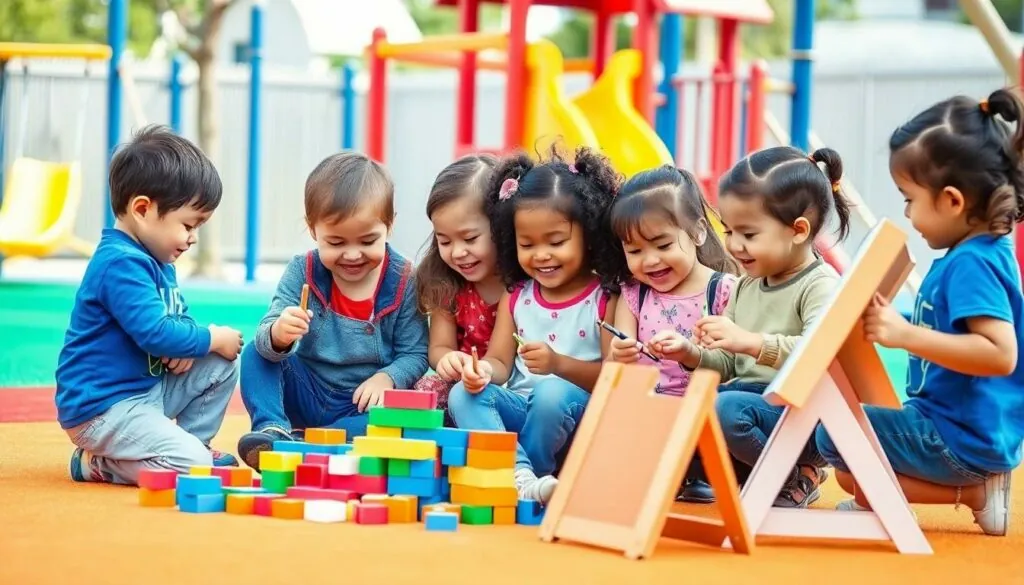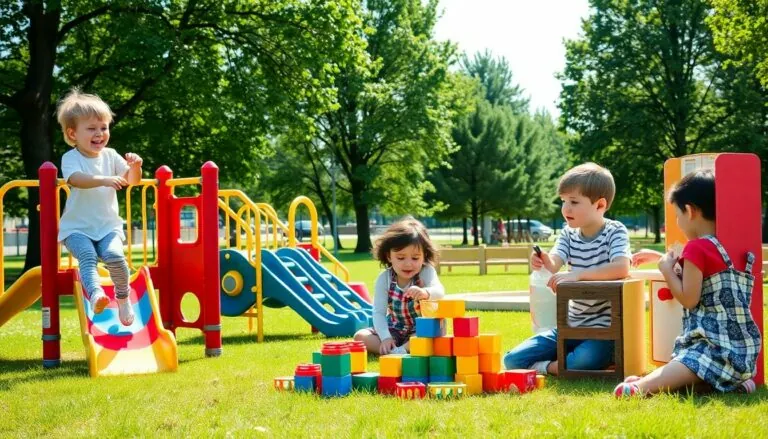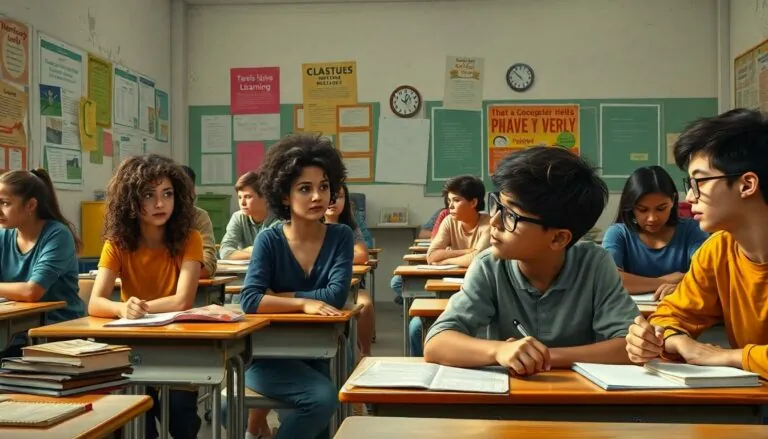Table of Contents
ToggleWhen it comes to child development, there’s a fascinating phase that often gets overlooked—parallel play. Picture this: a group of toddlers, each engrossed in their own world, building towers with blocks or coloring outside the lines. They might not be sharing toys or exchanging pleasantries, but they’re learning and growing in ways that are just as valuable.
Parallel play is like the introvert’s version of socializing. Kids engage side by side, soaking in the social cues without the pressure of direct interaction. It’s a crucial stepping stone in developing social skills, fostering independence, and laying the groundwork for future friendships. So, buckle up as we dive into the whimsical world of parallel play and uncover why it’s more than just kids playing alone together.
Understanding Parallel Play
Parallel play is a significant aspect of child development. It involves children playing alongside each other while focusing on their individual activities, helping them absorb important social cues.
Definition of Parallel Play
Parallel play occurs when children engage in similar activities near each other without direct interaction. They might use the same toys or play within the same space but engage in their own tasks. This practice typically emerges around the age of two and continues through the preschool years. Children learn from observing their peers while feeling comfortable in their independent play. Activities during this stage often serve to develop cognitive and social skills, laying a foundation for more complex interactions in the future.
Characteristics of Parallel Play
Several characteristics define parallel play. Children often share a play area and choose similar toys or games. Their focus remains predominantly on their own tasks rather than on one another. Communication typically consists of occasional remarks or reactions, but not active conversations. Children might imitate each other’s actions, showing awareness of their peers. The presence of others creates a sense of security, allowing kids to explore their environment while developing essential social awareness. Overall, parallel play supports the gradual transition towards cooperative play as children mature.
Stages of Child Development
Parallel play plays a significant role in child development. This stage typically unfolds between ages two and five, laying the groundwork for future social interactions.
Developmental Milestones
Children demonstrate several developmental milestones during the parallel play stage. At age two, they exhibit increased mobility and curiosity about their environment. By age three, children start to imitate others’ actions while still focusing on their individual tasks. As they approach four, they can engage in more complex activities alongside peers. Children begin to show awareness of others but continue to prefer solitary play, indicating a gradual shift towards social participation. Awareness of personal preferences also becomes evident, as children gravitate towards specific toys or activities that capture their interest.
Role of Parallel Play in Development
Parallel play fosters essential social skills in children. This form of play enables them to observe peer behaviors, which enhances their understanding of social dynamics. Engaging in similar activities helps children develop essential skills such as sharing, turn-taking, and problem-solving. Confidence grows as they become more comfortable in group settings. Moreover, parallel play offers a safe space where children can explore their interests without the pressure of direct interaction. This exploration forms the basis for cooperative play, cultivating friendships and vibrant social connections in the future.
Benefits of Parallel Play
Parallel play offers numerous advantages, especially in the context of child development. This stage nurtures essential skills that contribute to overall growth.
Social Skills Development
Children observe peers during parallel play. They notice how others interact and respond to various situations. This observation allows kids to learn social cues and expectations within a group. Engaging in similar activities nearby fosters a sense of belonging. Gradually, this familiarity encourages children to transition to more interactive play styles. Shared play spaces create opportunities for later cooperation as they become comfortable with one another. These interactions lay the groundwork for friendships by teaching them about sharing and turn-taking.
Emotional Regulation
Parallel play facilitates emotional growth and self-regulation. As children focus on individual tasks, they learn to manage frustration when things don’t go as planned. They also develop patience, especially when waiting for turns with toys. Witnessing peers express various emotions helps them understand and identify those feelings in themselves. This process builds resilience in social settings. Children become more adept at recognizing emotional responses that contribute to social interactions. Parallel play provides a safe space for navigating feelings, ultimately enhancing emotional intelligence.
Encouraging Parallel Play
Encouraging parallel play fosters essential social skills in children. Engaging kids in specific activities heightens their interest and promotes interaction with peers.
Activities to Promote Parallel Play
Setting up play zones with similar toys enhances parallel play. Puzzle areas and building blocks encourage children to work alongside peers, focusing on their tasks. Art stations, equipped with various supplies, invite kids to independently create while observing others. Outdoor activities like sandbox play allow toddlers to explore together, even when they play separately. Providing ample space and a variety of materials transforms playtime into an engaging experience, fostering independence and interaction.
Parental Guidance and Support
Parents play a key role in promoting parallel play. Introducing children to playgroups or classes creates opportunities for social exploration. Observing from a distance gives kids space while ensuring they feel supported. Encouraging moments of shared activities allows children to practice turn-taking and sharing naturally. Discussing feelings and experiences after playtime aids in understanding emotions and social dynamics. Active participation and encouragement from parents make parallel play valuable for social development.
Conclusion
Parallel play plays a crucial role in child development by providing a foundation for social skills and emotional growth. It allows children to explore their environment alongside peers while focusing on individual tasks. This stage not only nurtures independence but also fosters an understanding of social dynamics, preparing children for more interactive play styles in the future.
Encouraging parallel play through thoughtfully arranged activities can enhance children’s social experiences. By observing and engaging with peers, children learn essential skills like sharing and patience. Ultimately, parallel play serves as a stepping stone to building meaningful friendships and navigating social situations with confidence.







